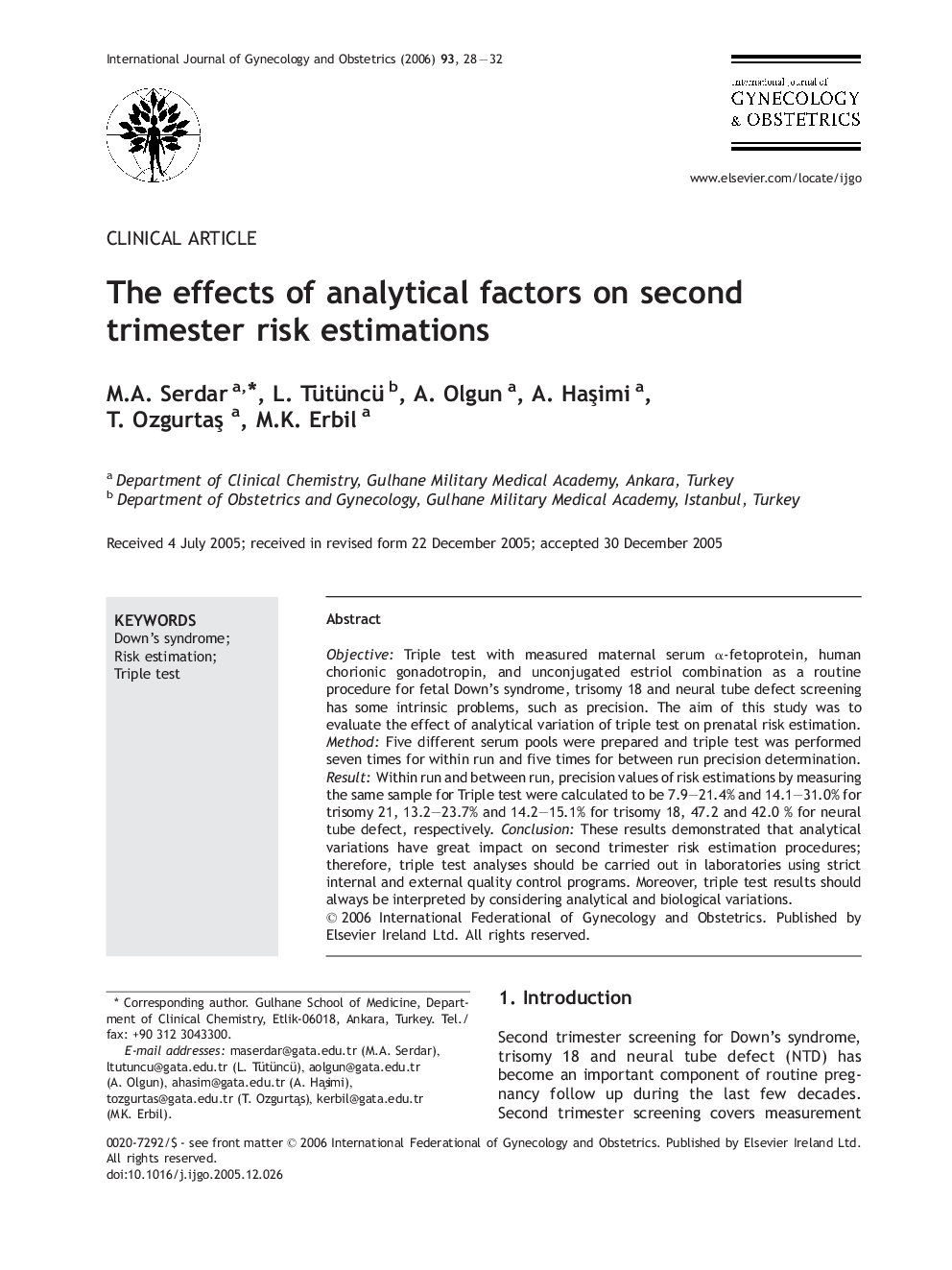| Article ID | Journal | Published Year | Pages | File Type |
|---|---|---|---|---|
| 3952598 | International Journal of Gynecology & Obstetrics | 2006 | 5 Pages |
Objective: Triple test with measured maternal serum α-fetoprotein, human chorionic gonadotropin, and unconjugated estriol combination as a routine procedure for fetal Down's syndrome, trisomy 18 and neural tube defect screening has some intrinsic problems, such as precision. The aim of this study was to evaluate the effect of analytical variation of triple test on prenatal risk estimation. Method: Five different serum pools were prepared and triple test was performed seven times for within run and five times for between run precision determination. Result: Within run and between run, precision values of risk estimations by measuring the same sample for Triple test were calculated to be 7.9–21.4% and 14.1–31.0% for trisomy 21, 13.2–23.7% and 14.2–15.1% for trisomy 18, 47.2 and 42.0 % for neural tube defect, respectively. Conclusion: These results demonstrated that analytical variations have great impact on second trimester risk estimation procedures; therefore, triple test analyses should be carried out in laboratories using strict internal and external quality control programs. Moreover, triple test results should always be interpreted by considering analytical and biological variations.
